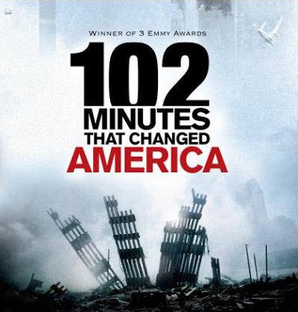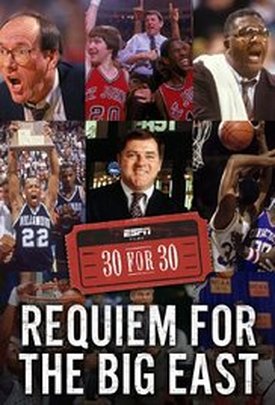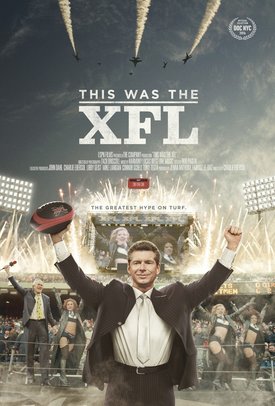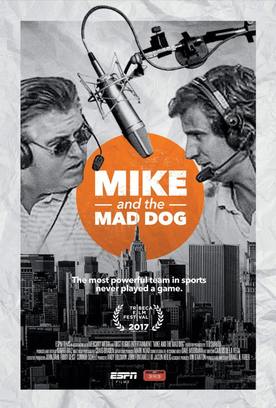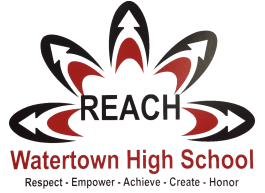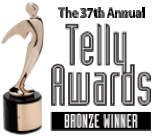Documentary Production Vocabulary
A-Roll – Main footage, interviews
B-Roll – Secondary footage, video of subject or story
VO – Voice Over, narration
VOT – Video on Tape, another word for both A-Roll and B-Roll
SOT – Sound on Tape, any sound without video
VSOT – Video & Sound on Tape, another name for packages or finished stories
Line Input - Audio from a cable that’s more than 50 feet, higher audio frequency
Mic Input - Audio from a cable less than 50 feet, lower audio frequency
Pre Production – The planning and overall preparation that occurs before filming.
Post Production – Refers to all the activities that follow principle shooting from editing to the final product.
Archival – Movies that are stored and used for study, research, and placement in other movies.
Cinema verite – A term meaning "Cinema Truth" applied to truth-seeking documentaries and methods of recording with minimal interference.
Commentary – Remarks given by a narrator concerning the topic of the movie.
Direct cinema – Documentary traditions seeking to record things as they are with minimal evidence of the presence of filmmakers.
Producer – Handles all pre-production planning and organizing of the overall project.
Director – Directs project from behind the camera, responsible for all aspects of the project when on-site.
Audio Technician – Mixes and records sound on-site during shooting.
Camera Operator (Director of Photography) – Responsible for shooting video and operation of cameras
B-Roll – Secondary footage, video of subject or story
VO – Voice Over, narration
VOT – Video on Tape, another word for both A-Roll and B-Roll
SOT – Sound on Tape, any sound without video
VSOT – Video & Sound on Tape, another name for packages or finished stories
Line Input - Audio from a cable that’s more than 50 feet, higher audio frequency
Mic Input - Audio from a cable less than 50 feet, lower audio frequency
Pre Production – The planning and overall preparation that occurs before filming.
Post Production – Refers to all the activities that follow principle shooting from editing to the final product.
Archival – Movies that are stored and used for study, research, and placement in other movies.
Cinema verite – A term meaning "Cinema Truth" applied to truth-seeking documentaries and methods of recording with minimal interference.
Commentary – Remarks given by a narrator concerning the topic of the movie.
Direct cinema – Documentary traditions seeking to record things as they are with minimal evidence of the presence of filmmakers.
Producer – Handles all pre-production planning and organizing of the overall project.
Director – Directs project from behind the camera, responsible for all aspects of the project when on-site.
Audio Technician – Mixes and records sound on-site during shooting.
Camera Operator (Director of Photography) – Responsible for shooting video and operation of cameras
What is a Documentary?
It is a genre of movie making that uses video & film scenes, photographs and/or sound of real people and real events which when edited together creates a particular story, viewpoint, message or experience.
Documentaries can be funny, poignant, disturbing, ironic, absurd, inspirational, amusing, shocking or any combination.
Traditionally, documentaries are 30-minutes to 2 hours in length (to fit within a television schedule or for theatrical release). However, documentaries are often shorter in length, especially in recent years with the advent of the Internet and web video.
What is a Documentary?
Documentaries can be funny, poignant, disturbing, ironic, absurd, inspirational, amusing, shocking or any combination.
Traditionally, documentaries are 30-minutes to 2 hours in length (to fit within a television schedule or for theatrical release). However, documentaries are often shorter in length, especially in recent years with the advent of the Internet and web video.
What is a Documentary?
Six "Modes" or "Styles" of Documentaries
Reading: |
| ||||||
Observational Documentary
- "Observe" things as they naturally happen.
- Avoids staging shots
- Lacks commentary or supporting interviews
- Filmmaker and audience just watch as story unfolds.
- Avoids staging shots
- Lacks commentary or supporting interviews
- Filmmaker and audience just watch as story unfolds.
Reflexive Documentary
- Attempts to be "reflective" of story that is being portrayed.
- Filmmaker asks audience to come along for the ride.
- See the story through the "lens" constructed or provided by the filmmaker.
- Liberties are taken with story and fact to "create" the story.
- Some shots may be "constructed" for the purposes of advancing the filmmakers story.
- Filmmaker asks audience to come along for the ride.
- See the story through the "lens" constructed or provided by the filmmaker.
- Liberties are taken with story and fact to "create" the story.
- Some shots may be "constructed" for the purposes of advancing the filmmakers story.
|
|
|
Expository Documentary
- Directly addresses Issues in the historical world.
- Addresses the viewer directly, with titles or voices that propose a perspective, advance an argument, or recounts history.
- Uses either a "voice of god" commentary (speaker is heard but never seen) or a "voice of authority" commentary (speaker is heard and also seen)
- Images serve a supporting role to the story being told by the commentator.
- The "voice" organizes and creates stream for which the pictures will flow.
- Addresses the viewer directly, with titles or voices that propose a perspective, advance an argument, or recounts history.
- Uses either a "voice of god" commentary (speaker is heard but never seen) or a "voice of authority" commentary (speaker is heard and also seen)
- Images serve a supporting role to the story being told by the commentator.
- The "voice" organizes and creates stream for which the pictures will flow.
|
|
Click the "YouTube" Button Below the Video. Will Open New Window and Start Documentary.
|
Poetic Documentary
- Sacrifices conventions of continuity editing, replaces with rhythms and spatial juxtapositions.
- Filmmaker select and arrange into associations and patterns of their choosing.
- Creates an angle for a particular argument or point of view.
- Reality is portrayed in a series of fragments, subjective impressions, incoherent acts, and loose associations.
- Filmmaker select and arrange into associations and patterns of their choosing.
- Creates an angle for a particular argument or point of view.
- Reality is portrayed in a series of fragments, subjective impressions, incoherent acts, and loose associations.
|
|
|
Participatory Documentary
- Filmmaker goes into the field, lives among others and speaks about or represents what they experience.
- Filmmaker steps out from behind camera, down off of the observational perch and becomes a part of the action.
- Success hinges on the nature and quality of the encounter between the filmmaker and the subject or situation.
- Stresses the actual, encounter between filmmaker and subject.
- Filmmaker steps out from behind camera, down off of the observational perch and becomes a part of the action.
- Success hinges on the nature and quality of the encounter between the filmmaker and the subject or situation.
- Stresses the actual, encounter between filmmaker and subject.
|
|
|
Performative Documentary
- Primarily address the audience both emotionally and expressively.
- Filmmakers response serves to excite and animate their audience.
- Filmmakers seek to have viewers experience the situation in which they are engaged to change their positions.
- Mixes the expressive techniques that give texture and density to film (point of view shots, musical scores, renderings of subjects state of mind, flashbacks, freeze frames, etc.)
- Filmmakers response serves to excite and animate their audience.
- Filmmakers seek to have viewers experience the situation in which they are engaged to change their positions.
- Mixes the expressive techniques that give texture and density to film (point of view shots, musical scores, renderings of subjects state of mind, flashbacks, freeze frames, etc.)
|
|
|
Mr. Robbins, Digital Media & Communications, Watertown High School, 50 Columbia Street, Watertown, MA 02472
